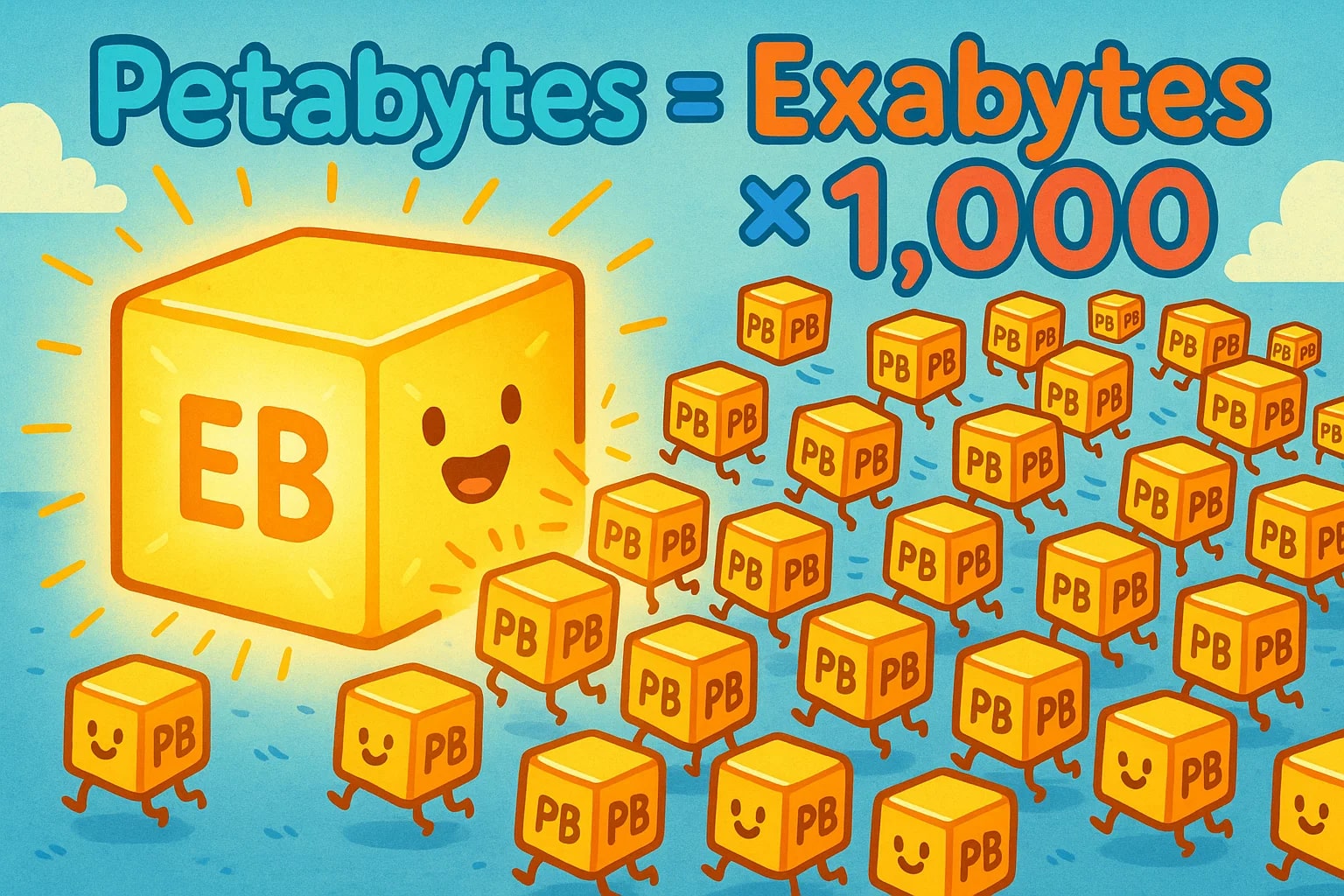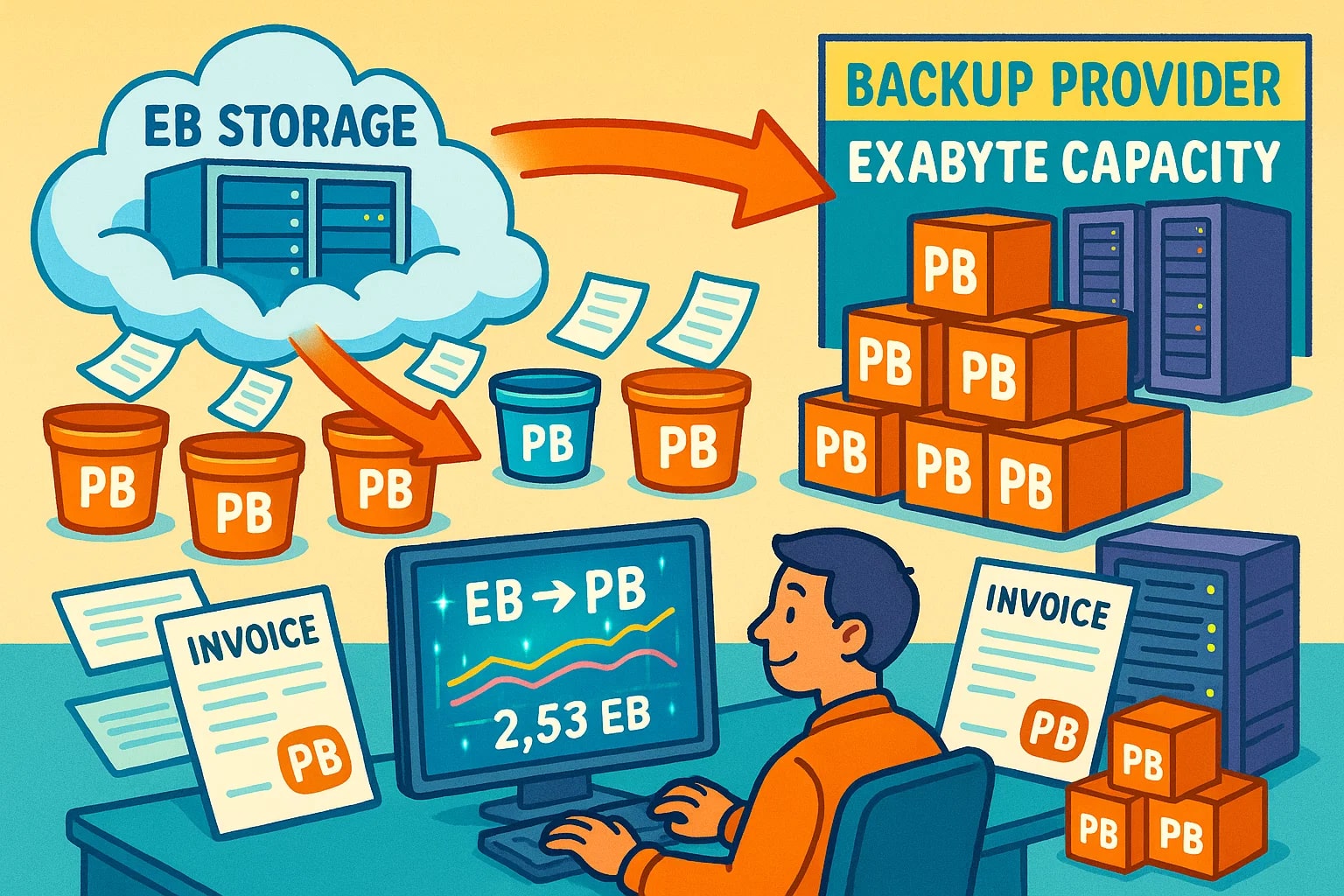exabyte to petabyte – How to convert EB to PB
As data storage and processing expand at an unprecedented pace, we’ve moved from talking in gigabytes and terabytes to now using exabytes and petabytes. Whether you’re analyzing global cloud infrastructure or preparing long-term archives for massive datasets, converting exabytes (EB) to petabytes (PB) gives you a better view of scale — especially when breaking down usage, planning resources, or estimating cost.
Let’s take a look at how to make this conversion quickly and where it matters in real-world applications.

What is an exabyte (EB)?
An exabyte is equal to 1,000 petabytes, or 1 quintillion bytes — that's 1,000,000,000,000,000,000 bytes. It’s among the largest standard digital storage units in use today and is commonly found in:
-
Hyperscale data centers
-
Global content delivery platforms
-
Government and scientific data repositories
-
Internet traffic reports
-
AI model training and sensor networks
A single exabyte can hold enough data for 250 million HD movies — that’s how massive it is.
What is a petabyte (PB)?
A petabyte equals 1,000 terabytes, or 1 quadrillion bytes. Though smaller than an exabyte, petabytes are still substantial, frequently used for:
-
Enterprise backups
-
Cloud storage capacity
-
Massive video libraries
-
National archives
-
Global messaging and email systems
You’ll often see PB used in mid-to-large-scale tech stacks, while EB enters the conversation when things go planetary in scale.
How to convert exabyte to petabyte
This conversion is as direct as it gets:
1 exabyte = 1,000 petabytes
So the formula is:
petabytes = exabytes × 1,000
Let’s go through some quick examples.
You’re managing 2.5 EB of combined user data across regions. In petabytes:
2.5 × 1,000 = 2,500 PB
A national library digital archive holds 0.8 EB of scanned historical documents:
0.8 × 1,000 = 800 PB
A streaming service forecasts monthly delivery of 1.2 EB worth of video content:
1.2 × 1,000 = 1,200 PB
You can speed up calculations with our Data Storage Converter or explore additional tools from the full Conversion tools directory.
Did you know?
-
Global internet usage surpassed 120 EB per month in 2023 — that’s 120,000 PB of data moving around the world monthly.
-
NASA’s Earth Observing System stores exabytes of satellite data, which scientists analyze in petabyte-sized chunks.
-
Social platforms like Instagram and TikTok generate exabyte-scale video content yearly, managed internally as thousands of PB.
-
AI companies training large language models frequently consume petabytes of training data, all organized within multi-exabyte ecosystems.
-
Governments and research institutions split exabyte-sized national archives into manageable petabyte-level data lakes for efficiency.
Why this conversion matters more than ever
Think about how cloud computing evolved. A decade ago, storing 1 PB was a big deal. Today, exabytes are the new ceiling — but organizations still think in petabytes when budgeting, provisioning, and forecasting.
For example, a tech company might get billed in PB, even if its internal metrics report in EB. Or a cloud backup provider might advertise exabyte-level capacity while organizing client data by petabyte “buckets.” That makes this conversion essential for everything from invoices to infrastructure diagrams.
In high-frequency analytics or data governance, switching from EB to PB keeps things grounded and clear — even as systems handle billions of gigabytes daily.

Multiply by 1,000 — and you're in business
It’s simple math with massive implications:
petabytes = exabytes × 1,000
Use it anytime you need to make sense of massive data systems in more familiar storage terms.
For instant, accurate conversions, visit our Data Storage Converter. And if you’re dealing with other units, Jetcalculator’s full Conversion tools will help you scale up or down without breaking a byte.

